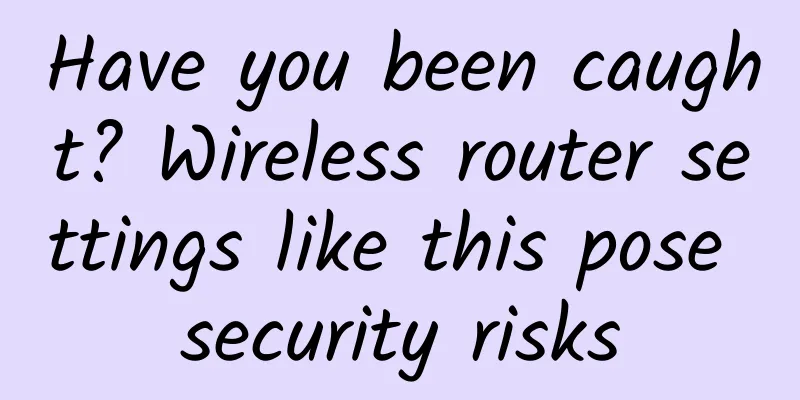Have you been caught? Wireless router settings like this pose security risks

|
Recently, cyberattacks on home wireless routers have frequently occupied the headlines of security news. Broadband Genie recently commissioned a security agency to conduct a security survey on wireless routers and found that more than half of UK users' routers use the default router account settings, which are at risk of being attacked by hackers. At the same time, 54% of users are worried about being hacked. In a survey of nearly 2,000 home users, it was found that 53% of users kept the default settings on their home routers. With the popularity of mobile devices and the rapid development of home IoT devices, wireless routers are not only the network center of the home, but also the smart control center of the home. Once attacked by a network, not only the user's personal information and property will be lost, but also their lives will be disturbed by hackers. In addition to the unpatched vulnerabilities in the manufacturer's firmware, many users do not consider security issues when configuring wireless routers and do not have basic network security awareness. The survey shows that only 19% of users have accessed the "system management" function on their routers, 22% have checked which devices are connected to their networks, 17% have changed the administrator password, and 14% have updated the router's firmware. The survey results are simply shocking. Home wireless routers are very vulnerable. If users cannot manually set them up, the weaknesses of the routers will always exist. Both operators and equipment manufacturers have made users ignore the importance of router security. Think about what is said above, has it happened to you as well? Here we recommend that users immediately update the latest firmware released by the manufacturer and change the default management password of the router background. It is best to set the WiFi password and administrator password at home in the form of "numbers + letters + symbols", which is the most difficult to crack. Do not use the same or logical numbers, which are the easiest to attack. At the same time, you must also close the remote management port in the router background to prevent the router from being controlled and becoming a member of the botnet.
|
<<: The greater development of 5G lies in industrial applications
>>: TD-LTE wins award: Guarding 5G and leading the world
Recommend
How will 5G change the world?
5G is the latest mobile network technology that o...
Facebook Open/R, the next generation routing platform and the future of network engineering
[[213724]]...
VIRPUS: 40% off on all VPS, Seattle data center, XEN architecture, monthly payment of $2, annual payment of $20
VIRPUS has released a December discount, offering...
A Brief Discussion on WebSocket Protocol-RFC 6455
Labs Guide Before the emergence of WebSocket, the...
The technical support behind the 11.11 promotion: in-depth analysis and practical cases of SLA and SLO
background It's the 11.11 promotion day again...
Aruba changes the rules of the game to drive three major changes in network management
When the first iPhone was released in 2007, Steve...
IDC Commentary: What are the remaining obstacles to China's 5G?
With the news that Nokia and Ericsson won the bid...
iONcloud adds new bare metal server, $78/month - E3-1230v2/16GB memory/1TB SSD hard drive
Krypt's iONcloud cloud platform has recently ...
5G core network revenue expected to reach $1 billion by 2020
5G core network revenue will reach $1 billion in ...
Aruba Wi-Fi 6E Joins 1,400 Colleges and Universities Worldwide to Create a Smart Campus for the Future
Aruba, a Hewlett Packard Enterprise company, rece...
Ten reasons why it's time to retire traditional routers in branch offices
Over the years, we've dutifully upgraded our ...
Proactive monitoring without embedding: a best practice for proactively perceiving user experience
The business world is like a battlefield. Whoever...
In the case of Li Yunlong, the principle of SSL/TLS protocol can be explained as follows
At the end of the TV series "Bright Sword&qu...
Kuroit: £2/month KVM-2GB/15GB NVMe/1TB/Los Angeles Data Center
Kuroit is a foreign hosting company founded in 20...









